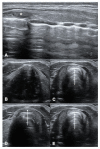Point-of-Care Ultrasound in Airway Evaluation and Management: A Comprehensive Review
- PMID: 37174933
- PMCID: PMC10177245
- DOI: 10.3390/diagnostics13091541
Point-of-Care Ultrasound in Airway Evaluation and Management: A Comprehensive Review
Abstract
Airway management is a common and critical procedure in acute settings, such as the Emergency Department (ED) or Intensive Care Unit (ICU) of hospitals. Many of the traditional physical examination methods have limitations in airway assessment. Point-of-care ultrasound (POCUS) has emerged as a promising tool for airway management due to its familiarity, accessibility, safety, and non-invasive nature. It can assist physicians in identifying relevant anatomy of the upper airway with objective measurements of airway parameters, and it can guide airway interventions with dynamic real-time images. To date, ultrasound has been considered highly accurate for assessment of the difficult airway, confirmation of proper endotracheal intubation, prediction of post-extubation laryngeal edema, and preparation for cricothyrotomy by identifying the cricothyroid membrane. This review aims to provide a comprehensive overview of the key evidence on the use of ultrasound in airway management. Databases including PubMed and Embase were systematically searched. A search strategy using a combination of the term "ultrasound" combined with several search terms, i.e., "probe", "anatomy", "difficult airway", "endotracheal intubation", "laryngeal edema", and "cricothyrotomy" was performed. In conclusion, POCUS is a valuable tool with multiple applications ranging from pre- and post-intubation management. Clinicians should consider using POCUS in conjunction with traditional exam techniques to manage the airway more efficiently in the acute setting.
Keywords: cricothyrotomy; difficult airway; endotracheal intubation; point-of-care; ultrasound.
Conflict of interest statement
The authors declare no conflict of interest.
Figures










References
Publication types
LinkOut - more resources
Full Text Sources
Medical

